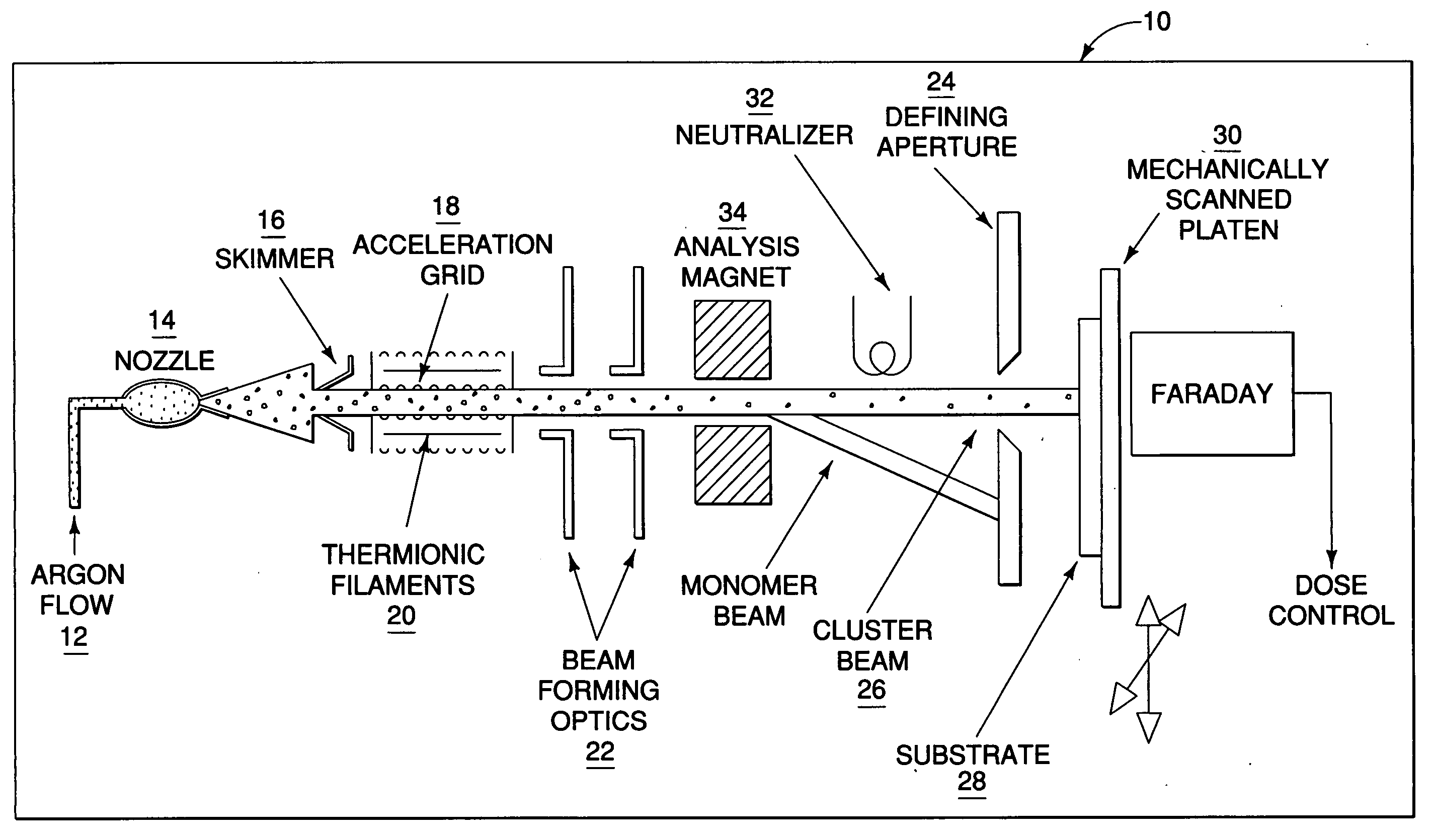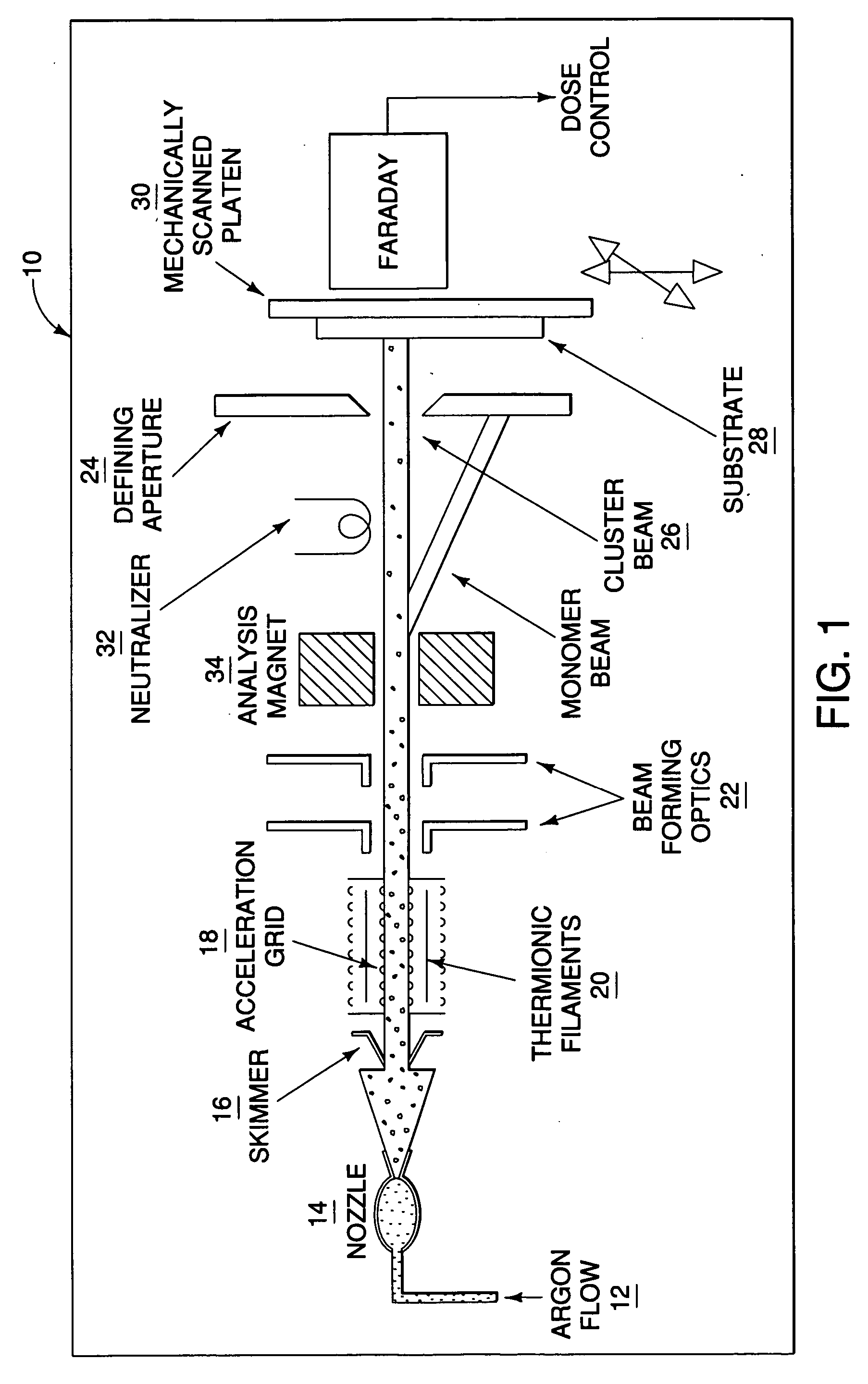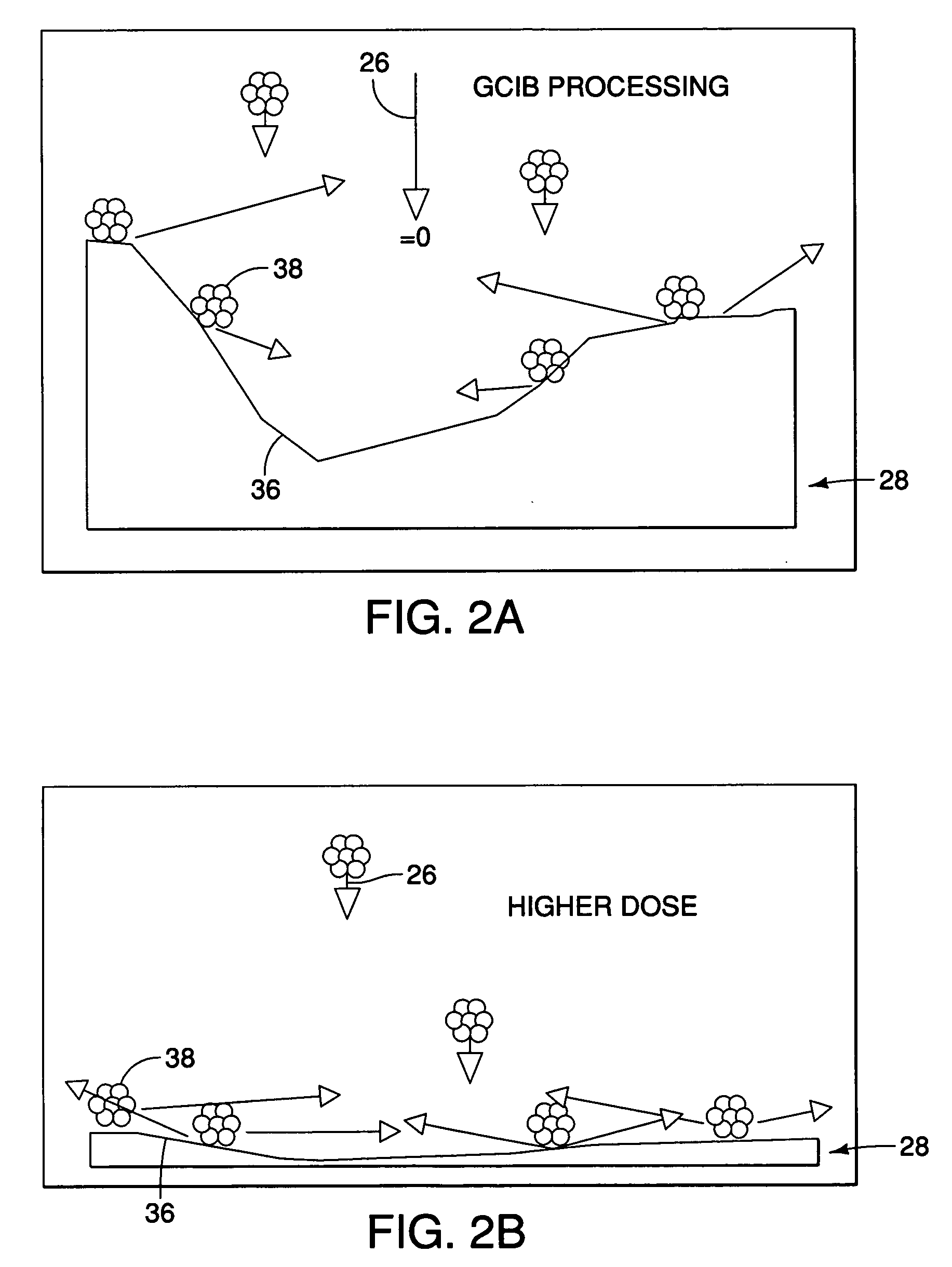Apparatus and method for polishing gemstones and the like
a technology for gemstones and apparatus, applied in the field of apparatus and methods for polishing gemstones, can solve the problems of high cost of gemstones, and particularly diamonds, owing, and low processing efficiency, and achieve the effects of increasing the processing time, and reducing the chance of human errors or dependencies
- Summary
- Abstract
- Description
- Claims
- Application Information
AI Technical Summary
Benefits of technology
Problems solved by technology
Method used
Image
Examples
Embodiment Construction
[0029] Overcoming the anisotropy of mechanical-based polishing process is one of the key factors of intermetallic chemical-mechanical polishing and GCIB treatment of gemstones and the like. Whereas the use of a polishing scaife is very time and labor intensive, taking hours or even days to obtain a satisfactory polish level, GCIB treatment, as performed using methods taught in the present invention using apparatus disclosed herein, can batch process a few thousands of diamonds at a time taking only on the order of minutes to process the entire lot while achieving sub-nanometer level surface finish. This level of surface finish is currently not achievable with the scaife method for diamonds for all planes and directions.
[0030] The invention further details a production process for polishing of diamonds (natural and artificial), gemstones (sapphire, emeralds, ruby and other soft gemstone which are hard to polish), and precious / durable metals using gas cluster ion beam (GCIB) processi...
PUM
 Login to View More
Login to View More Abstract
Description
Claims
Application Information
 Login to View More
Login to View More - R&D
- Intellectual Property
- Life Sciences
- Materials
- Tech Scout
- Unparalleled Data Quality
- Higher Quality Content
- 60% Fewer Hallucinations
Browse by: Latest US Patents, China's latest patents, Technical Efficacy Thesaurus, Application Domain, Technology Topic, Popular Technical Reports.
© 2025 PatSnap. All rights reserved.Legal|Privacy policy|Modern Slavery Act Transparency Statement|Sitemap|About US| Contact US: help@patsnap.com



